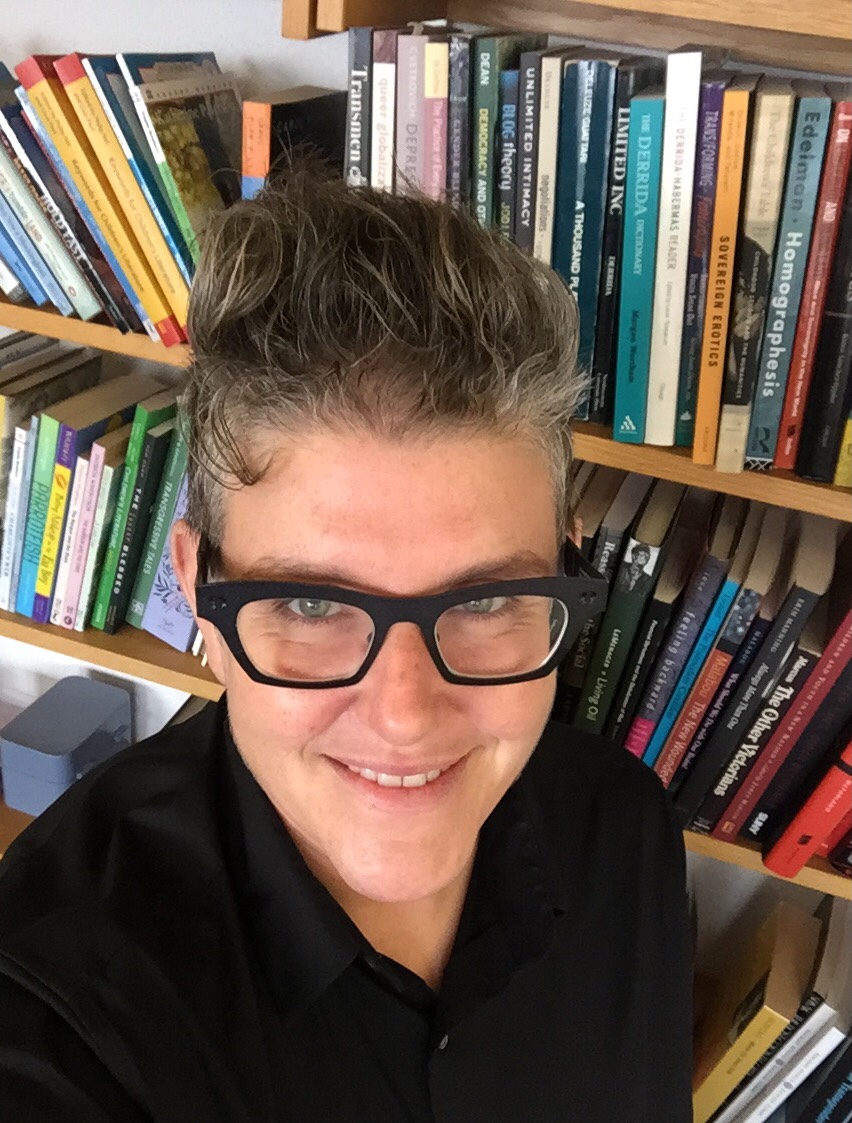
Dr. Nat Hurley has taught at 8 different postsecondary institutions before arriving at the University of Alberta. This teaching has taken place in departments of English, Cultural Studies, Women's Studies, in Writing Studies Programs, and in Humanities 101, a course offered at a second stage Women's Shelter, through Community Service-Learning (CSL). She has led courses as diverse as Gender Performativity and Remediation, Psychoanalysis and Childhood, Transgender Literature and Theory, Genre and Social Circulation, and Early American Writing. She supervises PhD students whose projects include: the affective dimension of online fan cultures, the queering of Jewish liturgy, child imperialism, American literary history, queer youth beyond the stigmas of mental health, and opera studies. She has also served for the Association of Research in the Cultures of Young People, the Association of Canadian College and University Teachers of English, been co-founder and organizer of the annual Faculty of Arts conference for Undergraduate research on Feminist, Gender and Sexuality Studies, received a KIAS Cluster Grant, and has been s a board member of Exposure: Edmonton's Queer Arts and Culture Festival. With all of this rich and varied experience under her hat, it is no wonder that she is now the new Senior Director of Interdisciplinary Studies.
"In all of these facets of my job, I am committed to thinking intersectionality: at the intersections of social belongings as well as the intersections of disciplines and modes of knowledge production. Intersectional interdisciplinarity is at the heart of everything I do."
Getting to know Nat
Why did this position appeal to you?
"I want to put my energy into sustaining and creating the kinds of intellectual and learning spaces that I most want to inhabit in the university. In other words, I want a place to put my enthusiasm. As someone whose work has been interdisciplinary-within-a-discipline, I think the Office of Interdisciplinary Studies has long been working on making those spaces.
In addition to standing as site of creativity and resilience, OIS should be the place that makes interdisciplinarity more visible more generally: where we can represent to ourselves and to others the existing labour of interdisciplinarity and to foreground the meaningful student experiences that result from it.
The new BA structure opens up possibilities for creating innovative pathways through the degree-not only through majors, but through creatively conceived minors and certificate programs. I think OIS is well positioned to help students realize pathways through their degrees. OIS can, in my view, continue to be guiding force in the Faculty of Arts: an incubator for initiatives that mobilize existing resources and teaching capacity across the faculty; a structural crossroads for the disciplines and departments of the faculty; a hub of possibility that works in partnership with units within and beyond the faculty to improve student experience, to enhance faculty collaborations, and to run programs with growing demand."
Hurley describes her leadership style as: Consultative, Collaborative, Concillatory, Supportive, Reflective, and Reflexive
"First principle of the Director of OIS should be having the backs of the people who work in this unit. The unit must be prepared to defend and promote those programs. Interdisciplinarity finds articulation and needs the greatest advocates precisely where it exceeds departmentalism. It's important to consider that more than one kind of interdisciplinary work or program might exist under the umbrella of OIS-this is not a one-size fits all unit. If building is to happen, the existing programs of OIS must be supported and central to the ways we imagine building anything further. It is also true that if building is to happen-and I do believe OIS can expand its capacities through effective partnerships and creative administration and delivery-we need to be a friend and partner to interdisciplinarity across the Faculty of Arts."
Describe your vision for OIS
"My vision for OIS sees this unit as a hub of opportunity: a place where students and faculty can come together to discuss the pressing questions of our time from a range of disciplinary viewpoints; where the university might strengthen its voice to engage the larger community of Edmonton, where students encounter experiential learning, and where imaginative reasoning might find its fullestexpression. I'm excited about the possibility of an undergraduate Media Studies program. I wonder if we can organize a Public Research Day. I look forward to working with units on campus that are already doing amazing things like CSL, KIAS, Wirth Institute, Sound Studies, Faculty of Native Studies, the Research Creation and Social Justice Collaboratory, Canadian Institute for Ukrainian Studies, the China Institute, Canadian Centre for Ethnomusicology, and the Parkland Institute. I'm hopeful that we can develop innovative programming like capstone workshops for Arts students or an Interdisciplinary Seminar in Theory and Methodology for Graduate Students and Faculty, and maybe even a PhD in Digital Humanities. Let's dream a little and see what we can do together. That's the OIS I envision."
We look forward to all the possibility Nat presents.